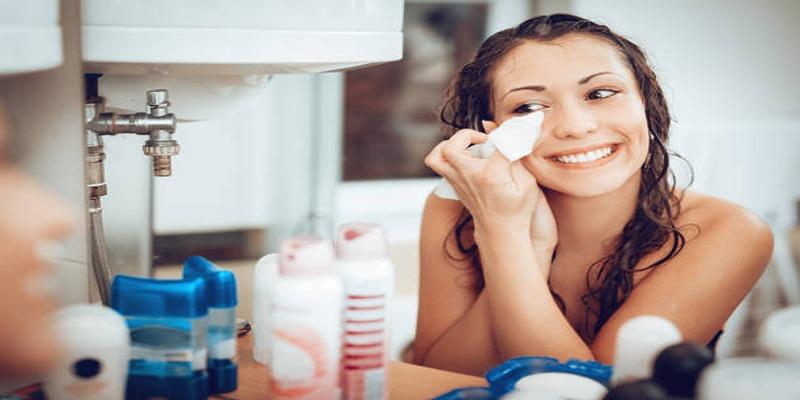The Clean Cosmetics Revolution: Bridging Science and Sustainability
The clean cosmetics revolution is reshaping the beauty industry by prioritizing transparency, sustainability, and scientific innovation. Consumers are increasingly drawn to products that are not only effective but also safe for their skin and the environment. This movement emphasizes the use of non-toxic, ethically sourced ingredients and eco-friendly packaging, aiming to reduce the industry’s environmental footprint. By combining cutting-edge science with a commitment to sustainability, clean cosmetics are proving that beauty and responsibility can go hand in hand, inspiring a new era of conscientious product choices for mindful consumers.
What Are Clean Cosmetics?
Clean cosmetics are beauty products formulated with safe, non-toxic ingredients, free from harmful substances like parabens, sulfates, phthalates, and synthetic fragrances. These products emphasize transparency, with brands openly disclosing ingredient lists and sourcing processes. Beyond safety, clean beauty is rooted in sustainability, prioritizing eco-friendly packaging, cruelty-free testing, and ethically sourced materials.
These pure cosmetic products lead to less volatile market behavior as consumers gain better knowledge. Quickly after noticing the health hazards of certain chemicals as well as the environmental implications in conventional beauty products most people move to address these problems. Worldwide brands adapt scientific innovations to manufacture durable high-performance solutions which appeal to principled consumers of today.
The Science Behind Clean Beauty:
Modern beauty brands are harnessing breakthroughs in biotechnology, green chemistry, and plant-based solutions to develop products that are both effective and environmentally responsible.
Biotechnology, for instance, allows for the lab creation of ingredients like hyaluronic acid and peptides, reducing dependence on animal-derived or ecologically harmful sources. Green chemistry takes it further, designing processes that minimize waste and replace hazardous materials with safer alternatives. These advancements enable brands to deliver high-performance products without compromising safety or sustainability.
Natural and organic ingredients are another cornerstone of clean beauty. However, it’s not just about incorporating plant-based materials—it involves rigorous testing to ensure these ingredients are safe, stable, and effective over time. Many brands are also innovating with sustainable alternatives to conventional components, proving that quality and responsibility can coexist.
By blending science with sustainability, clean beauty is redefining the industry, demonstrating that exceptional performance and ethical practices go hand in hand.
Sustainability: The Heart of Clean Beauty

Sustainability is the driving force behind the clean beauty movement, tackling long-standing environmental challenges within the beauty industry. From excessive packaging waste to the overuse of natural resources, the industry has faced growing scrutiny. Clean beauty brands are rising to the occasion, adopting sustainable practices that reshape how beauty products are created, packaged, and consumed.
1. Eco-Friendly Packaging
One of the most visible changes in clean beauty is the shift toward eco-friendly packaging. Brands are increasingly turning to recyclable, biodegradable, and refillable materials to reduce their environmental impact. Plastic containers are being replaced with alternatives like glass, aluminum, or compostable materials. Many brands are also introducing refill programs, encouraging customers to reuse packaging and embrace a culture of minimal waste.
2. Ethical Sourcing
Ethical sourcing is another essential pillar of clean beauty. Brands are striving to source ingredients responsibly, with a focus on protecting both the planet and its people. This includes supporting fair trade, using sustainably harvested materials, and avoiding ingredients tied to deforestation or habitat destruction. These initiatives not only safeguard the environment but also empower local communities and reinforce ethical standards across the supply chain.
3. Carbon Neutrality
Reducing carbon footprints has become a key goal for clean beauty brands. Many are adopting energy-efficient operations, tracking their emissions, and offsetting them through reforestation projects or investments in renewable energy. Some brands are going even further, committing to climate-positive initiatives that remove more carbon from the atmosphere than they produce.
By making sustainability a priority, clean beauty brands are reshaping the industry, proving that environmental responsibility and beauty can coexist harmoniously. These efforts are setting a new standard, showing that caring for the planet is just as important as caring for ourselves.
Transparency and Consumer Education:
Transparency is at the heart of the clean cosmetics movement, driven by modern consumers who want to know exactly what’s in their beauty products and how they’re made. To meet this demand, brands are stepping up by providing detailed ingredient lists, disclosing sourcing and manufacturing practices, and earning third-party certifications to support their claims.
Certifications like USDA Organic, Ecocert, and Leaping Bunny (for cruelty-free products) help consumers easily identify brands that meet high standards for safety, sustainability, and ethics. Many companies are also embracing technology, using tools like QR codes on packaging to give instant access to product details—empowering consumers to make informed, confident choices.
Education plays an equally pivotal role in advancing the clean cosmetics movement. Brands are launching initiatives to raise awareness about the potential risks of harmful chemicals and the benefits of clean beauty. By informing their audiences, they’re not only driving demand for safer, more sustainable products but also fostering a culture of mindfulness and intentional decision-making.
Challenges and Opportunities:

The clean cosmetics movement has made impressive progress, but it faces notable challenges. One major obstacle is the lack of regulation within the beauty industry. Terms like "clean," "natural," and "organic" are often used inconsistently, creating confusion for consumers. To combat this, many organizations are advocating for standardized definitions and stricter regulations to promote clarity and accountability.
Another significant challenge is the higher cost of clean beauty products. Sustainable ingredient sourcing, eco-friendly packaging, and advanced research often drive up production expenses, which are ultimately passed on to consumers. However, as demand continues to rise and economies of scale take effect, prices are expected to become more affordable over time.
Despite these hurdles, the clean cosmetics revolution offers tremendous opportunities for innovation and growth. Brands that prioritize science-backed solutions and sustainability are uniquely positioned to succeed in an increasingly competitive market.
Conclusion:
The clean cosmetics movement is far more than a passing trend—it represents a fundamental shift in our approach to beauty. As science and sustainability converge, the industry stands on the brink of remarkable innovation. From biodegradable packaging to lab-grown ingredients, the possibilities for progress are endless. At its heart, the clean cosmetics revolution is about creating a beauty industry that values both people and the planet. By prioritizing transparency, embracing sustainable practices, and harnessing scientific advancements, brands can not only meet evolving consumer expectations but also contribute to a more ethical and environmentally conscious world.












